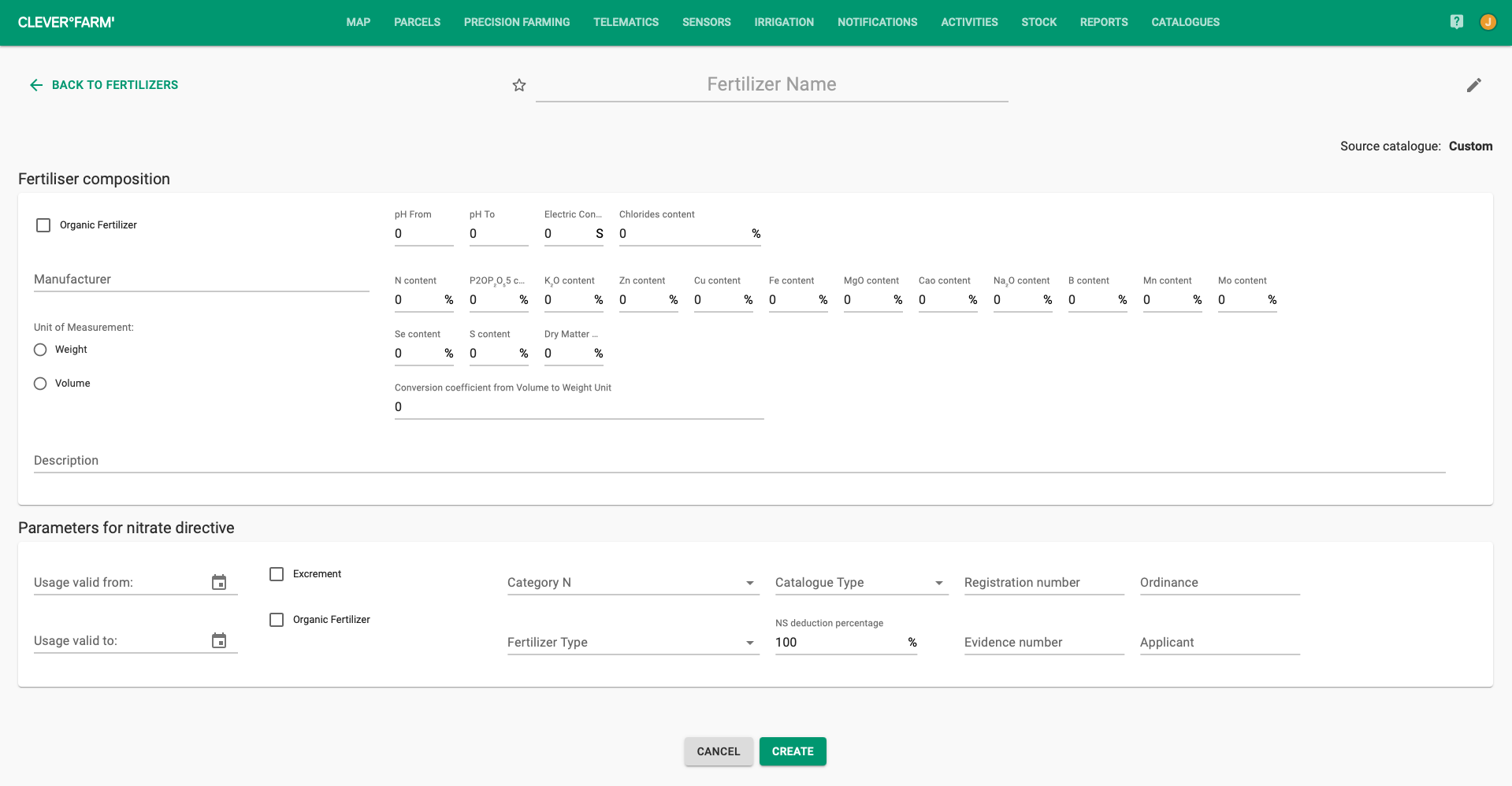Entering your own fertilizer into the catalogue
How do you enter a fertilizer that is not found in the central fertilizer dial? What is the difference between the NS credit coefficient and the conversion coefficient?
If the fertiliser is not listed in the central codebook - we draw from the eAgri fertiliser register - you can enter your own fertiliser. These are mainly imported fertilisers labelled as EC fertilisers or your own organic fertilisers, e.g. digestate from a biogas plant.
When entering your own fertilizer into the codebook, you must fill in information about the manufacturer, which category N the fertilizer belongs to, the type of fertilizer and the codebook type classification. Alternatively, fill in its composition according to the analysis - nitrogen (N), phosphorus oxide (P2O5), potassium oxide (K2O), magnesium oxide (MgO), calcium oxide (CaO), sulphur (S), etc.
Crediting factor NS
You also need to fill in the NS crediting factor, i.e. the factor for counting nutrients according to the Nitrate Directive. The effective N limit includes mineral N from 100%, N from manure and compost from 30%, N from digestate from 70% and N from cattle slurry, but also from faeces and urine from grazing animals from 60%. For 100 % the value of the crediting factor is 1, for 70 % the factor is 0,7, etc. This coefficient is multiplied by the total N input recorded in the fertiliser register. E.g. I supply 120 kg N in cattle slurry, this is entered in the records, but only 72 kg N/ha is counted towards the limit (= 120 x 0.6).
Conversion factor from volume to mass unit
The last coefficient refers to liquid fertilizers (or set the conversion coefficient to 1 for solid fertilizers). As nitrogen application is always given in kg, it is necessary to know how to convert the application rate from litres to kg for each liquid fertiliser. The conversion factor is used for this purpose. Each fertiliser always states that there is x kg of nitrogen in 100 litres of fertiliser. You can then easily calculate the coefficient. For example, I have a fertiliser that states that there is 39 kg of nitrogen in 100 litres of fertiliser and the nitrogen content of the fertiliser is 30%. Then the coefficient will be 39/30 = 1.3.

